Municipalities as integrators and coordinators in adaptation to climate change (LIFE16 CCA/HU/000115)
The project implementation has begun in September 2017 under the leadership of the Ministry of Interior of Hungary as coordinating beneficiary. Within the Ministry, the Coordination Office for Municipalities subordinated to the Secretary of Municipalities is the responsible department for the professional implementation of the LIFE-MICACC project.
For the successful implementation of the LIFE-MICACC project, nine further partners cooperate as associated beneficiaries: five Hungarian municipalities, where the 5 NWRM (Natural Water Retention Project) pilot projects will be designed and implemented, and four Hungarian organizations with relevant professional knowledge (water management, the protection of nature, climate-friendly municipalities, innovation).
The overall goal of the project is to reduce the vulnerability of municipalities, improve their adaptation skills, and strengthen their local coordination and integration role, by designing and testing innovative natural water retention measures. In the project, we pay special attention to build out watershed level partnerships, and strengthening cooperation among municipalities, through complex planning, and creating common future visions on the catchments.
Specific objectives
- To raise awareness and increase knowledge of decision-makers at Hungarian local governments, relevant public administration bodies, and economic actors about the impacts of climate change and about ecosystem-based natural water retention measures (NWRM) as a powerful tool to improve climate resilience. To adopt and disseminate to Hungarian municipalities and stakeholders the relevant knowledge from implemented NWRM pilot cases in Europe.
- To test and demonstrate the practical applicability and viability of selected NWRMs in climate adaptation within the Hungarian natural, socio-economic and administrative context through developing and implementing prototypes of these measures on 5 pilot sites.
- To disseminate the practical knowledge gained from the 5 test cases, and to foster the replication of the tested NWRM solutions for improved climate resilience in different locations within Hungary, both at local and regional scales. To build locally coordinated catchment partnerships around a joint vision and prepare plans for the upscaling of NWRM solutions to catchment level, involving stakeholders.
- To build local capacity at the most vulnerable Hungarian municipalities in order to strengthen the coordinating and integrating role of local governments in mainstreaming ecosystem-based climate change adaptation measures into natural resources management strategies and spatial planning, and to enhance an enabling environment for them.
- To create innovative and user-friendly smart IT tools for all Hungarian municipalities and other stakeholders that help them understanding and managing climate risks, support knowledge sharing, and facilitate stakeholder mobilization.
- To involve Hungarian local governments in national and European networks of mutual support and cooperation for climate change adaptation and mitigation.
Main actions of the project
To achieve the above objectives a partnership composed of the responsible national governmental bodies, professional NGOs and for-profit organizations and five local governments has been set up.
The 5 partner municipalities will be the pilot sites, where small-scale NWRM interventions in CCA will be developed and tested. We will prepare model solutions for the different typical water risks, amplified by climate change Hungarian municipalities face.
Besides, 23 other municipalities are involved in the project as external cooperating partners and primary target group of capacity building and replication activities. At least 5 transfer sites (in addition to the 5 pilot sites) will be chosen from them, where plans for the replication of the demonstrated NWRM models will be adopted.
To foster the upscaling of our NWRM solutions to the watershed level, we will use GIS-based runoff and infiltration modeling and prepare feasibility studies of NWRM on catchment level. These “master plans” will be agreed upon and taken up by catchment level partnerships that will be built around the 5 pilot sites, involving stakeholders (e.g. other municipalities, responsible public administration bodies, land users, and business actors in the supply chains).
The project addresses all the 3177 local governments of Hungary to increase their knowledge and coordination capacity in CCA by:
- Publishing an Adaptation Guide with a focus on ecosystem-based methods
- Deploying 2 online tools that help to understand and tackle water risks (the Hungarian version of the global Water Risk Filter of WWF incorporating national datasets, and a newly developed interactive learning and networking tool that help implementation of NWRM concepts, evaluating options, finding service providers and financing possibilities)
- Creating an e-learning platform and knowledge sharing website
- Delivering trainings on CCA, NWRM, and municipalities’ coordinating roles and means in CCA
- General awareness-raising and dissemination activities
It also supports knowledge exchange and cooperation with European municipalities by:
- 5 study trips to learn from European NWRM cases
- Cooperation and exchange programme between AoCFM and other Supporting Organisations of the Covenant of Mayors
- Promote the CoM and support interested local governments to become a member
Finally, the project will deliver recommendations to the government for the improvement of the legal environment to strengthen the coordination role of municipalities in CCA.
Number of Partners: 9
Project Budget: 2 564 783 EUR (LIFE – 1 528 069 EUR)
Project Duration: 01/09/2017 – 31/08/2021
Project Lead Partner: Ministry of Interior of Hungary
Contact Person: Zsuzsanna Hercig, project manager
Contact Details:

